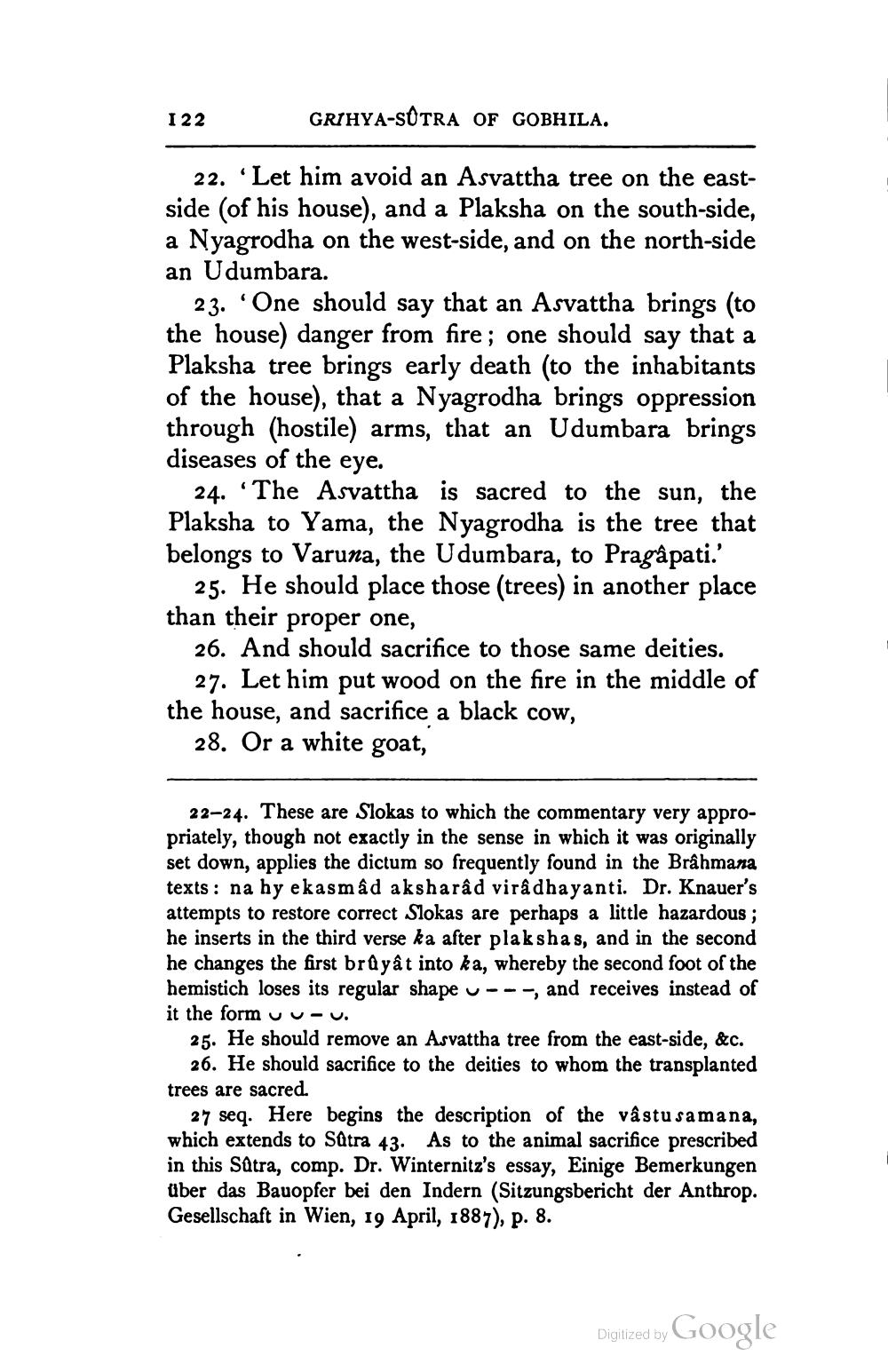________________
GRIHYA-SUTRA OF GOBHILA.
22. 'Let him avoid an Asvattha tree on the eastside (of his house), and a Plaksha on the south-side, a Nyagrodha on the west-side, and on the north-side an Udumbara.
122
23. 'One should say that an Asvattha brings (to the house) danger from fire; one should say that a Plaksha tree brings early death (to the inhabitants of the house), that a Nyagrodha brings oppression through (hostile) arms, that an Udumbara brings diseases of the eye.
·
24. The Asvattha is sacred to the sun, the Plaksha to Yama, the Nyagrodha is the tree that belongs to Varuna, the Udumbara, to Pragâpati.'
25. He should place those (trees) in another place than their proper one,
26. And should sacrifice to those same deities. 27. Let him put wood on the fire in the middle of the house, and sacrifice a black cow,
28. Or a white goat,
"
22-24. These are Slokas to which the commentary very appropriately, though not exactly in the sense in which it was originally set down, applies the dictum so frequently found in the Brâhmana texts: na hy ekasmâd aksharâd virâdhayanti. Dr. Knauer's attempts to restore correct Slokas are perhaps a little hazardous; he inserts in the third verse ka after plakshas, and in the second he changes the first bryât into ka, whereby the second foot of the hemistich loses its regular shape ~, and receives instead of
it the form U-U.
25. He should remove an Asvattha tree from the east-side, &c. 26. He should sacrifice to the deities to whom the transplanted trees are sacred.
27 seq. Here begins the description of the vâstu samana, which extends to Sutra 43. As to the animal sacrifice prescribed in this Sutra, comp. Dr. Winternitz's essay, Einige Bemerkungen über das Bauopfer bei den Indern (Sitzungsbericht der Anthrop. Gesellschaft in Wien, 19 April, 1887), p. 8.
Digitized by
Google




